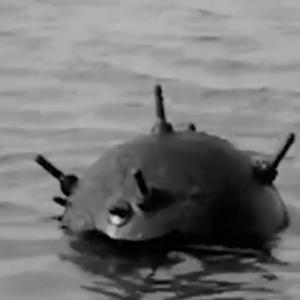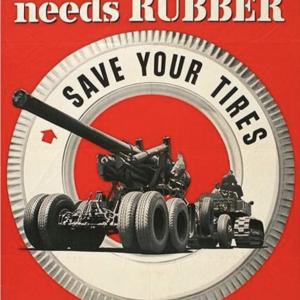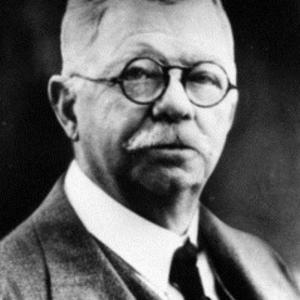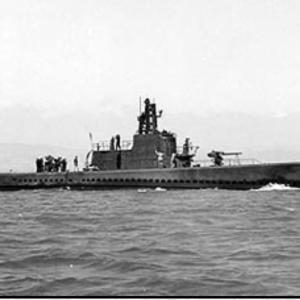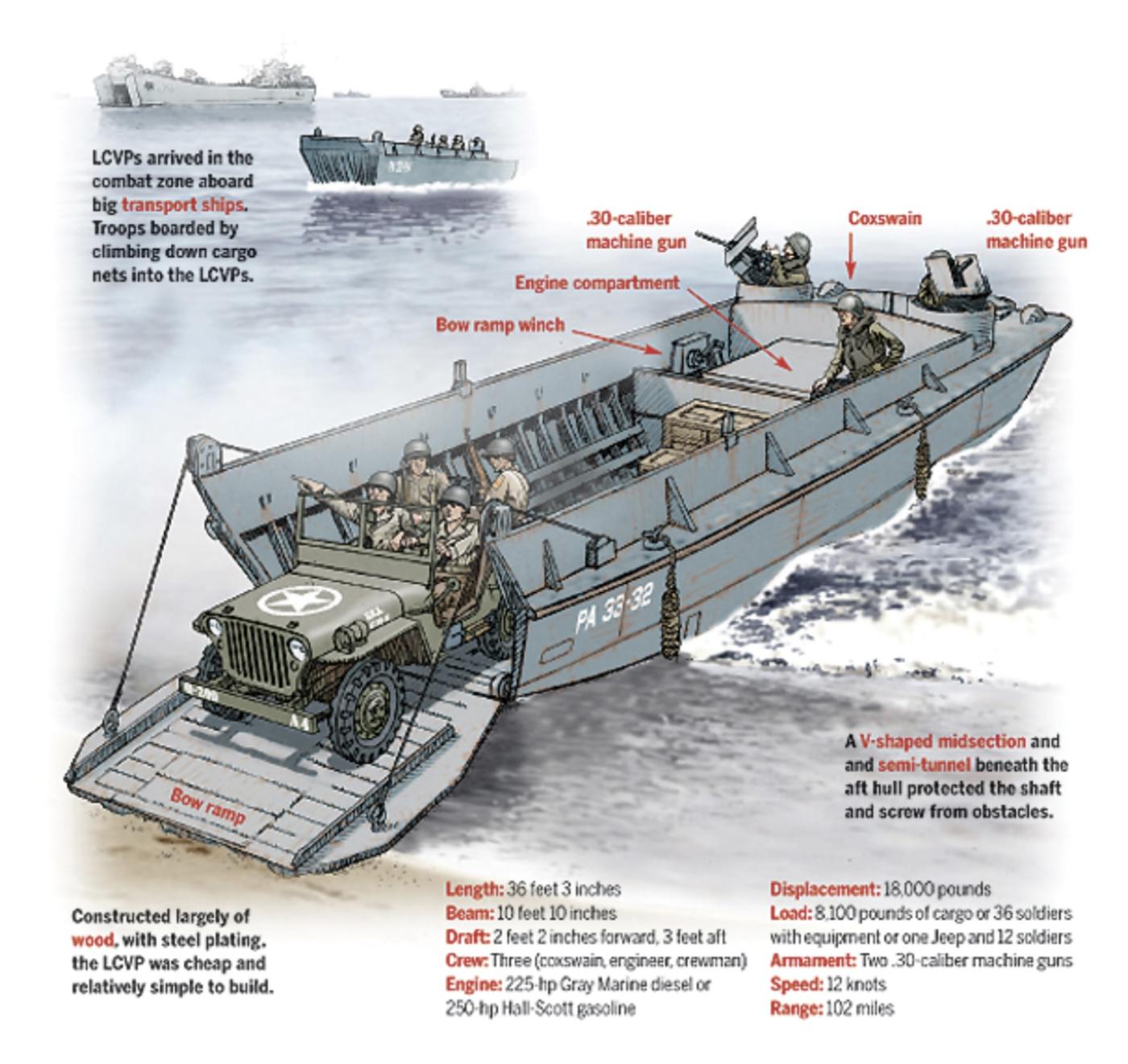
Higgins Landing Craft
The Higgins landing craft — usually called the Higgins boat and officially designated the LCVP (Landing Craft, Vehicle, Personnel) — became one of the defining pieces of equipment for Allied amphibious operations in World War II. Small, low, and rugged, the craft was designed to deliver troops, small vehicles and supplies directly from transport ships to open beaches where ports and piers did not exist. Its design and mass production changed the practical limits of amphibious warfare and made large-scale beach landings like Normandy feasible.
The design came from Andrew Jackson Higgins, a New Orleans boatbuilder who originally developed shallow-draft swamp boats for Gulf Coast trappers and oil-field work. Higgins adapted those designs into military landing craft. Key innovations included a recessed propeller to operate in shallow water and a bow ramp that folded down so troops could disembark quickly and directly onto beaches. His company, Higgins Industries of New Orleans, was the principal manufacturer, although other shipyards produced variants under license when wartime demand surged. General Dwight D. Eisenhower later credited Higgins’s boats as essential to Allied success.
Construction was deliberately simple to allow fast and large-scale production. The typical LCVP was about 36 feet long and around 11 feet wide, with a shallow draft of roughly 2 feet forward, allowing it to approach beaches directly. The hull was mainly plywood with steel reinforcement where needed. A large ramp at the bow provided rapid unloading. Power usually came from a single 225-horsepower diesel or gasoline engine, giving a speed of roughly 12 knots in calm water. The interior cargo well could carry either about 36 fully equipped infantrymen, a jeep with a small crew, or up to 8,000 pounds of cargo.
The Higgins boat was used extensively by the United States, Britain, Canada, and other Allied nations. It saw service in virtually every major amphibious assault of the war — from the Pacific island campaigns such as Guadalcanal and Tarawa to Sicily, Salerno, Normandy and beyond. Production totals are estimated in the tens of thousands, with figures often cited from around 12,500 to over 20,000 depending on how licensed copies are counted.
Its greatest strengths were its shallow-water capability, adaptability, and the ease and speed with which it could be mass-produced. The design allowed landings on beaches with almost no draft requirements, enabling assaults where no ports were available. It could carry men, light vehicles and supplies with minimal crew. The simple, rugged construction made it ideal for rapid wartime manufacture.
However, it had limitations. The plywood and open-top design offered little protection from enemy fire. In heavy seas the Higgins boat was uncomfortable and vulnerable to swamping. Its speed was adequate only for short runs and it lacked armor or serious protection. Troops disembarking down the ramp were often exposed to direct fire.
Despite those weaknesses, the LCVP became one of the most important instruments of Allied victory. It turned open coastlines into viable invasion points and removed the necessity of capturing major ports during the initial assault


